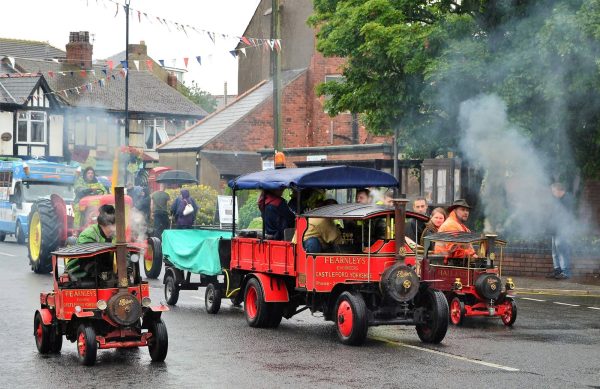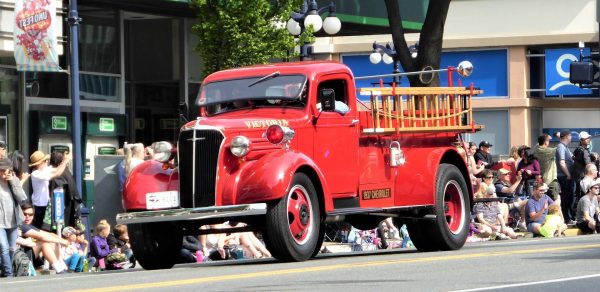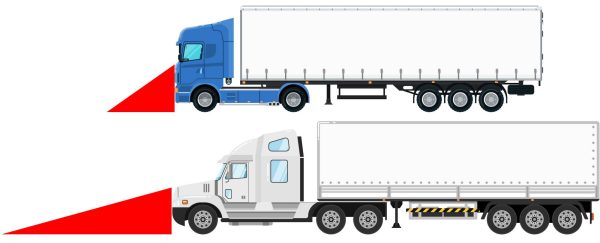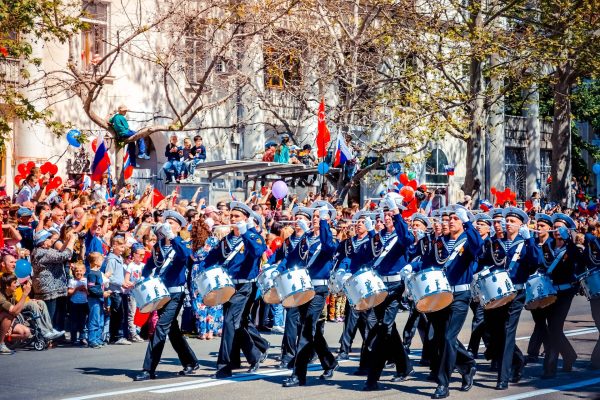Parade driving requires a specific set of skills for operating decorated vehicles, floats, and illuminated vehicles during ceremonial events, public processions, and festive parades. Whether you’re leading the parade or operating a parade float vehicle, maintaining precision and consistency while moving at very low speeds is essential.

Pre-Parade Vehicle Preparation
A thorough vehicle inspection is crucial before any parade event. Start by verifying that all decorations are securely fastened and that visibility through required mirrors and windows isn’t compromised. All electrical systems for lights or sound should be properly installed with functioning emergency cut-off switches. The vehicle itself needs careful attention—ensure the brakes and clutch are in excellent condition, there’s adequate fuel for extended low-speed operation, and the cooling system is functioning properly. Don’t forget to check tire pressure and condition, as these become even more critical during slow-speed manoeuvres.

Decorated Parade Vehicle Guidelines
When operating a decorated parade vehicle, several factors require careful consideration. Most UK routes have maximum height restrictions of approximately 13 feet (4 meters), and width limitations must be carefully observed. Weather conditions can significantly impact decorations, so ensure all elements are weatherproof and securely mounted. Driver visibility should never be compromised by decorative elements, and emergency exits must remain accessible. Pay particular attention to the weight distribution of decorations and the electrical load from any powered elements.
Christmas Lights Vehicle Parade Specifics
Christmas light parades present unique challenges for vehicle operation. All lighting systems must be securely mounted and connected to safely installed, weatherproof power systems. These additional electrical components should never interfere with normal vehicle operations. Clear visibility becomes even more critical during evening events, so ensure lights don’t create glare for other drivers. Consider installing backup power systems and remote operation capabilities to manage the display effectively.
Parade Float Vehicle Operation
Operating a parade float vehicle requires a heightened awareness of vehicle dynamics. The increased length and width affect turning radius and positioning, while different weight distributions can impact stability and handling. Coordination with any personnel on the float becomes essential, as does monitoring the float structure’s stability during movement. Proper engine ventilation is crucial during the extended periods of slow movement typical in parades.
Pedestrian and Performer Safety
If HGVs are used in the parade, drivers and performers should be aware of the large blind spot in front of the vehicle.

Speed Management and Control
The most challenging aspect of parade driving is maintaining a consistent speed between 3-5 mph. This becomes even more demanding with decorated vehicles or floats due to their additional weight and altered aerodynamics. Experienced drivers often use fixed reference points along the route to check their pacing and maintain steady progress.
Historic vehicles, or vehicles that are heavily loaded, can be prone to overheating, so temperature management is important.
Vehicle Positioning and Spacing
Proper spacing becomes critical with decorated vehicles and floats. Generally, maintain three vehicle lengths between elaborate displays to allow for safe stopping and optimal viewing. Consider the impact of protruding decorations and elevated elements when positioning your vehicle. Consistent spacing also ensures better photographic opportunities for spectators.
Safety and Communication
Safety must remain the paramount concern during parade operations. Regular checks of decoration security should be conducted throughout the event, with clear communication maintained between drivers, float personnel, and parade marshals. As noted in Rule 214 of the Highway Code, particular attention must be paid to crowd management during organised events. Establish reliable communication methods between all parade participants and ensure emergency procedures are well understood.

Lighting and Visibility
Legal requirements for vehicle lighting must be maintained despite decorative elements. All standard vehicle lights should remain clearly visible, including headlights, taillights, and indicators. In some cases, supplementary lighting may be necessary, particularly for evening parades. Number plates must remain visible and properly illuminated as required by UK law.
By following these guidelines and maintaining a focus on safety and precision, operators of decorated parade vehicles, Christmas light displays, and parade floats can ensure both a safe and spectacular event. Remember to always check with local authorities regarding any specific requirements for parades in their areas, as regulations can vary by location.
